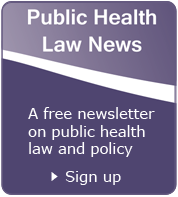Model Memoranda of Understanding
Recent investments in emergency preparedness have expanded the capacity of federal, state, local, and other health agencies to address challenges such as pandemic influenza, terrorist attacks, and natural disasters. In addition, law enforcement agencies, the corrections system, the judiciary, and many other sectors have re-examined their own policies and procedures, identified potential gaps, and undertaken steps to strengthen preparedness for future emergencies. While efforts to strengthen each sector's all-hazards preparedness are essential, no sector or jurisdiction is likely to face a major disaster or its aftermath alone. This section presents selected model memoranda of understanding to enhance coordination of preparedness across sectors.
- A Menu of Suggested Provisions for Public Health Mutual Aid Agreements [PDF-187KB]
Mutual aid agreements can be effective tools to assist U.S. state and local governments, tribes, Canadian provinces, First Nations, and Mexican states in sharing information, data, supplies, resources, equipment, or personnel for the purpose of protecting the public's health. - Model MOU for Joint Public Health/Law Enforcement Investigations (2008)
Designed as a starting point, setting forth the major gaps and problems in cross-sectoral and cross-jurisdictional emergency preparedness planning, as well as some key opportunities for addressing them. Please contact state and local public health officials or FBI Weapons of Mass Destruction coordinators in FBI field offices for a copy of the MOU or send an e-mail request to phlawprogram@cdc.gov. - Framework for Improving Cross Sector Coordination [PDF-2.4MB]
This document outlines the major gaps and problems in cross-sectoral and cross-jurisdictional emergency preparedness planning, as well as some key opportunities for addressing them.
Disclaimer: Information available on this website that was not developed by the Centers for Disease Control and Prevention (CDC) does not necessarily represent any CDC policy, position, or endorsement of that information or of its sources. The information contained on this website is not legal advice; if you have questions about a specific law or its application you should consult your legal counsel.
- Page last reviewed: April 13, 2012
- Page last updated: April 13, 2012
- Content source:




 ShareCompartir
ShareCompartir



